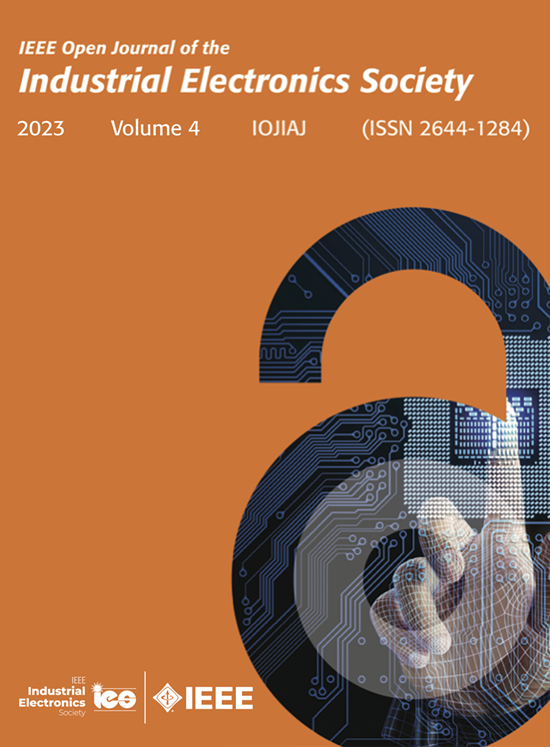基于冗余的直流微电网SoC集成与电压恢复能力设计方法
IF 4.3
Q1 ENGINEERING, ELECTRICAL & ELECTRONIC
IEEE Open Journal of the Industrial Electronics Society
Pub Date : 2025-08-07
DOI:10.1109/OJIES.2025.3596838
引用次数: 0
摘要
本文提出了一种基于模糊方法的冗余直流微电网能量管理系统(EMS)的二次电压控制设计,适用于车辆、飞机和具有敏感负载的医疗中心。两个电池储能系统(BESS)单元作为冗余直流MG的公共输入,包括一个级联双向Cuk转换器(CBC)连接到一个辅助级联双向Boost转换器(CBB)。CBC作为主要的电子解决方案,而CBB通过在CBC故障时保持运行来提高可靠性。此外,燃料电池(FC)通过升压转换器连接到CBC的主直流链路。关键贡献在于基于模糊的电压恢复EMS,通过s形函数集成SoC均衡,即使在BESS, FC或CBC维护期间也是如此。由于EMS作为基于电流源的系统运行,直流链路上的电压变化是预期的。而经过模糊恢复后,电压偏差保持在2%以下,运行效率超过90%。采用Lyapunov间接方法进行稳定性分析,并通过SpeedGoat和dSPACE平台交互得到实验结果。本文章由计算机程序翻译,如有差异,请以英文原文为准。
A Design Approach for SoC Integration With Voltage Restoration Capability for Redundancy-Based DC Microgrids
The article presents a secondary voltage control design for an Energy Management System (EMS) in a redundancy-based dc microgrid (MG) through a fuzzy-based approach, suitable for vehicles, aircraft, and medical centers with sensitive loads. Two battery energy storage system (BESS) units serve as common inputs for the redundancy-based dc MG, comprising a cascaded bidirectional Cuk converter (CBC) connected to an auxiliary cascaded bidirectional Boost converter (CBB). The CBC acts as the primary electronic solution, while the CBB enhances reliability by maintaining operation in case of a CBC failure. Furthermore, a Fuel Cell (FC) is linked to the main dc-link of the CBC by a Boost converter. The key contribution lies in the fuzzy-based voltage restoration for the EMS, integrating SoC equalization via S-shaped functions, even during BESS, FC, or CBC maintenance. As the EMS operates as a current source-based system, voltage variations on the dc-link are expected. However, after fuzzy-based restoration, the voltage deviation remains below 2% and the operational efficiency exceeds 90%. Stability analysis is conducted using Lyapunov’s indirect method, and the proposed approach is supported by experimental results obtained through SpeedGoat and dSPACE platform interactions.
求助全文
通过发布文献求助,成功后即可免费获取论文全文。
去求助
来源期刊

IEEE Open Journal of the Industrial Electronics Society
ENGINEERING, ELECTRICAL & ELECTRONIC-
CiteScore
10.80
自引率
2.40%
发文量
33
审稿时长
12 weeks
期刊介绍:
The IEEE Open Journal of the Industrial Electronics Society is dedicated to advancing information-intensive, knowledge-based automation, and digitalization, aiming to enhance various industrial and infrastructural ecosystems including energy, mobility, health, and home/building infrastructure. Encompassing a range of techniques leveraging data and information acquisition, analysis, manipulation, and distribution, the journal strives to achieve greater flexibility, efficiency, effectiveness, reliability, and security within digitalized and networked environments.
Our scope provides a platform for discourse and dissemination of the latest developments in numerous research and innovation areas. These include electrical components and systems, smart grids, industrial cyber-physical systems, motion control, robotics and mechatronics, sensors and actuators, factory and building communication and automation, industrial digitalization, flexible and reconfigurable manufacturing, assistant systems, industrial applications of artificial intelligence and data science, as well as the implementation of machine learning, artificial neural networks, and fuzzy logic. Additionally, we explore human factors in digitalized and networked ecosystems. Join us in exploring and shaping the future of industrial electronics and digitalization.
 求助内容:
求助内容: 应助结果提醒方式:
应助结果提醒方式:


